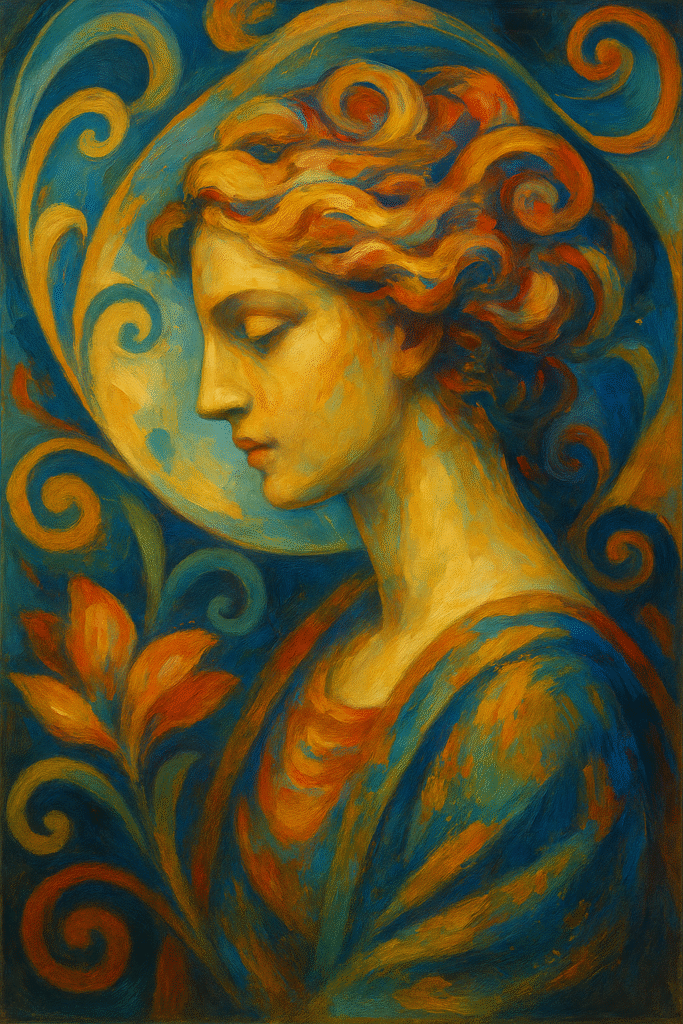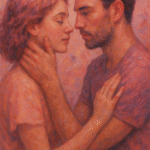The Journey Begins: Why Does Aesthetics Matter?
Aesthetics permeates every aspect of our lives, subtly influencing our decisions, emotional responses, and even our day-to-day interactions. But why is this concept so deeply embedded in our existence? At its core, aesthetics signifies our quest for beauty and the pursuit of pleasurable engagements with the world. It is not merely about visual appeal but extends to all sensory experiences, encapsulating everything from a mesmerizing piece of music to the delicate aroma of a blooming flower.
The profound impact of aesthetics is evident in our cultural expressions, from architecture and fashion to the unspoken rules governing everyday etiquette. Each aesthetic choice reflects personal and collective identities, grounding us in a shared understanding of beauty and harmony. In essence, aesthetics is not just an appreciation for beauty—it is a pivotal cornerstone for cultural dialogue and human connection.
Defining Beauty: A Multifaceted Concept
Historical Perspectives on Beauty Standards
Beauty, as a concept, has undergone tremendous evolution throughout history. Ancient philosophers such as Aristotle perceived beauty as an intrinsic quality, tied to the notions of order, symmetry, and proportion. In classical antiquity, beauty was closely associated with moral goodness, emphasizing virtuous character as essential to one’s aesthetic appeal. Moving forward to the Renaissance, we notice the shift towards individualism, where artists like Leonardo da Vinci and Michelangelo explored human anatomy’s aesthetic potential, blending art and science.
Modern Interpretations of Beauty
In contemporary society, beauty defies a singular definition, interpreted through diverse cultural lenses. Western cultures often associate beauty with youth and symmetry, yet in many African tribes, beauty is celebrated through age-old traditions, scarification, and body adornment. In Japan, the concept of ‘wabi-sabi’ finds beauty in imperfection and impermanence. These varying interpretations underscore the fluid and subjective nature of beauty, shaped by geographical, historical, and social contexts.
Art and Society: The Interconnected Web
Artistic Expression: A Reflection of Cultural Values
Art and society share an intimate bond, with art often serving as a reflection of the prevailing cultural values and norms. It captures the ethos of a time and place, providing insight into societal beliefs and concerns. For instance, the Romantic movement in art and literature was a reaction against industrialization, emphasizing emotion and nature’s beauty as an antidote to modern life’s mechanical coldness. Art communicates unspoken narratives and challenges established paradigms, fostering a richer understanding of societal dynamics.
Aesthetics in Everyday Life
Aesthetics escape the confines of galleries and museums, intermingling with everyday life in myriad ways. The design of urban landscapes, the elegance of a crafted home, or even the culinary arts all embody aesthetic principles. Daily routines and environments, often unconsciously, are infused with aesthetic decisions, from selecting attire to arranging workspaces. This infiltration shapes personal well-being and cultural identity, reinforcing how aesthetics quietly and pervasively sculpt our lived experiences.
Perception of Beauty: Subjective versus Objective
Cultural Influences on Aesthetic Judgments
Cultural backgrounds heavily influence our perception of beauty, resulting in diverse aesthetic judgments. A striking example is the preference for lighter skin in some Asian cultures due to historical and colonial influences, in contrast to the valorization of darker skin tones in countries like Brazil. Examining these variances invites a deeper understanding of beauty as a socio-cultural construct rather than an immutable truth. Cross-cultural studies reveal that while certain elements like symmetry may have universal appeal, beauty’s subjective nature defies a one-size-fits-all definition.
The Role of Media in Shaping Perceptions
The media serves as a powerful arbiter of beauty standards, often dictating societal norms and ideals through advertising, television, and social platforms. These mediums propagate images that influence public perception and dictate trends, creating a dynamic interplay between media-generated standards and individual self-image. Awareness of this influence encourages a more critical engagement with media portrayals, fostering personal empowerment and challenging homogenized standards.
The Philosophical Underpinnings of Aesthetics
Key Philosophers and Their Theories
The philosophical discourse on aesthetics is rich, stretching back to Plato, who regarded beauty as a form transcending physical manifestation, and Immanuel Kant, who proposed that beauty arises from a harmonious interplay between our sensory experiences and rational faculties. Kant’s notion of “disinterestedness” posits that true appreciation of beauty comes free from personal biases or desires, a view that has sparked endless debates and interpretations in philosophical circles.
Contemporary Philosophical Perspectives
Modern philosophers continue to expand the inquiry into aesthetics, exploring intersections with ethics, politics, and psychology. The rise of postmodern thought challenges traditional hierarchies and binaries within aesthetics, embracing pluralism and diversity. This shift reflects broader societal changes, questioning who gets to define beauty and elevating marginalized voices and narratives. Philosophical discourse thus remains a vibrant field, unraveling the complex tapestry of aesthetic experience.
Art Forms: Aesthetic Appreciation in Different Mediums
Visual Arts: Painting and Sculpture
Throughout history, visual arts have remained a profound vehicle for aesthetic expression. Paintings and sculptures capture the essence of beauty through color, form, and texture, crafting immersive experiences that evoke emotion and thought. Works like Van Gogh’s “Starry Night” and Michelangelo’s “David” embody the power of visual arts to tell stories, challenge perceptions, and celebrate human creativity and its relentless pursuit of beauty.
Performance Arts: Dance and Theatre
Performance arts, encompassing dance and theatre, offer unique aesthetic experiences through movement and narrative. Ballet, with its graceful choreography, and avant-garde theatre push the boundaries of traditional aesthetics, engaging audiences in new dimensions of beauty. These art forms use the human body as a canvas, exploring existential themes and igniting imagination, ultimately expanding our understanding of aesthetic pleasure.
The Science of Beauty: Neurological Perspectives
The Neuroscience of Beauty: How Your Brain Reacts
Recent advancements in neuroscience provide intriguing insights into how our brains perceive beauty. When experiencing beauty, specific brain regions associated with reward, pleasure, and emotional engagement become activated. This neurological response to art and beauty is akin to the satisfaction derived from fulfilling basic needs, evidencing beauty’s profound impact on human well-being and cognitive processes.
The Psychology Behind Aesthetic Choices
Psychology delves into why particular aesthetic choices resonate with individuals. Factors such as personal experiences, cultural background, and emotional states intertwine to influence aesthetic preferences. Understanding these psychological drivers offers valuable perspectives on how beauty affects behavior and decision-making, inviting us to reflect on the deeper motives behind our aesthetic inclinations.
Controversial Beauty Standards: Who Decides?
Evolving Standards
Beauty standards are continuously evolving, reflecting broader societal transformations. The shift towards inclusivity and diversity challenges antiquated norms that often marginalize certain groups. The popularity of body positivity and movements advocating for natural beauty highlight a growing acceptance of diverse body types and ethnic features, acknowledging beauty’s multifaceted nature.
The Role of Activism in Redefining Beauty
Activism plays a pivotal role in redefining beauty standards, pushing against the constraints of established ideals and promoting inclusivity. Campaigns such as the Dove Real Beauty initiative and the advocacy work of plus-size models like Ashley Graham encourage embracing one’s unique attributes. These efforts strive to democratize beauty, allowing for a more inclusive and authentic representation of what beauty can encompass.
Conclusion: The Future of Aesthetics and Beauty
As we look toward the future, aesthetics and beauty will continue to evolve, shaped by technological advancements, cultural shifts, and philosophical inquiries. Virtual reality and digital art represent new frontiers in aesthetic appreciation, offering immersive experiences that transcend traditional boundaries. In this ever-changing landscape, the challenge lies in nurturing an inclusive, curious, and open-minded understanding of beauty’s essence, ensuring that it remains a source of inspiration, connection, and joy.
FAQs about Aesthetics and Beauty
What is the origin of the word aesthetics?
The term “aesthetics” is derived from the Greek word “aisthesis,” meaning perception or sensation. It was formally introduced by philosopher Alexander Baumgarten in the 18th century to designate the study of sensory experiences and artistic perceptions.
How do different cultures define beauty?
Beauty is defined variably across cultures; while Western standards often emphasize symmetry and youth, other cultures celebrate features reflecting their heritage, such as the elaborate body art in Maori culture or the concept of “harmony” central to Chinese aesthetics.
Can beauty be objectively measured?
Objective measurement of beauty is complex due to its subjective nature, though some elements like symmetry and proportion have universal appeal. However, cultural, social, and individual factors all contribute to the perception of beauty.
What role does art play in defining beauty?
Art plays a crucial role in defining beauty by challenging conventional norms and offering new perspectives. It reflects cultural values and can transform our understanding of what is aesthetically pleasing.
How has social media influenced perceptions of beauty?
Social media has a substantial influence, often promoting idealized images that shape societal beauty standards. However, it also provides a platform for diverse beauty representations, challenging monolithic standards.
Are there universal standards of beauty?
While certain features such as symmetry may have universal appeal, beauty standards are largely shaped by cultural and societal influences, leading to diverse interpretations globally.
How do philosophers differ in their views on beauty?
Philosophers have varied greatly, from Plato’s ideal forms to Kant’s transcendental aesthetics, focusing on personal experience and subjective appreciation. Contemporary discourse continues to evolve these foundational ideas.
What are some famous works of art that challenge beauty standards?
Artworks like Picasso’s “Les Demoiselles d’Avignon” and Frida Kahlo’s self-portraits challenge conventional beauty, confronting viewers with raw emotion and unorthodox techniques.
How can one learn more about aesthetics?
Reading foundational texts in philosophy, engaging with diverse art forms, and exploring cultural studies are excellent ways to deepen your understanding. Visiting museums and galleries enhances firsthand engagement with aesthetic experiences.
Where can I find resources on art and aesthetics?
Resources can be found in libraries, online databases, and art institutions. Websites like Smarthistory and the National Endowment for the Arts offer extensive insights into art and cultural interpretations of aesthetics.
For further exploration, consider immersing yourself in the varied world of aesthetics through art exhibitions, cultural events, and scholarly publications. Embrace the beauty around you and let it spark continuous curiosity and wonder.


